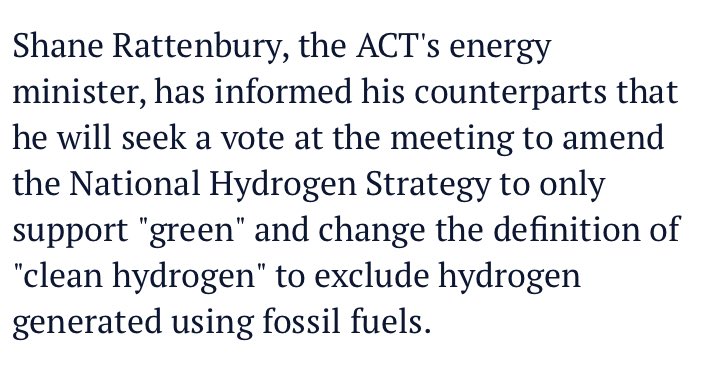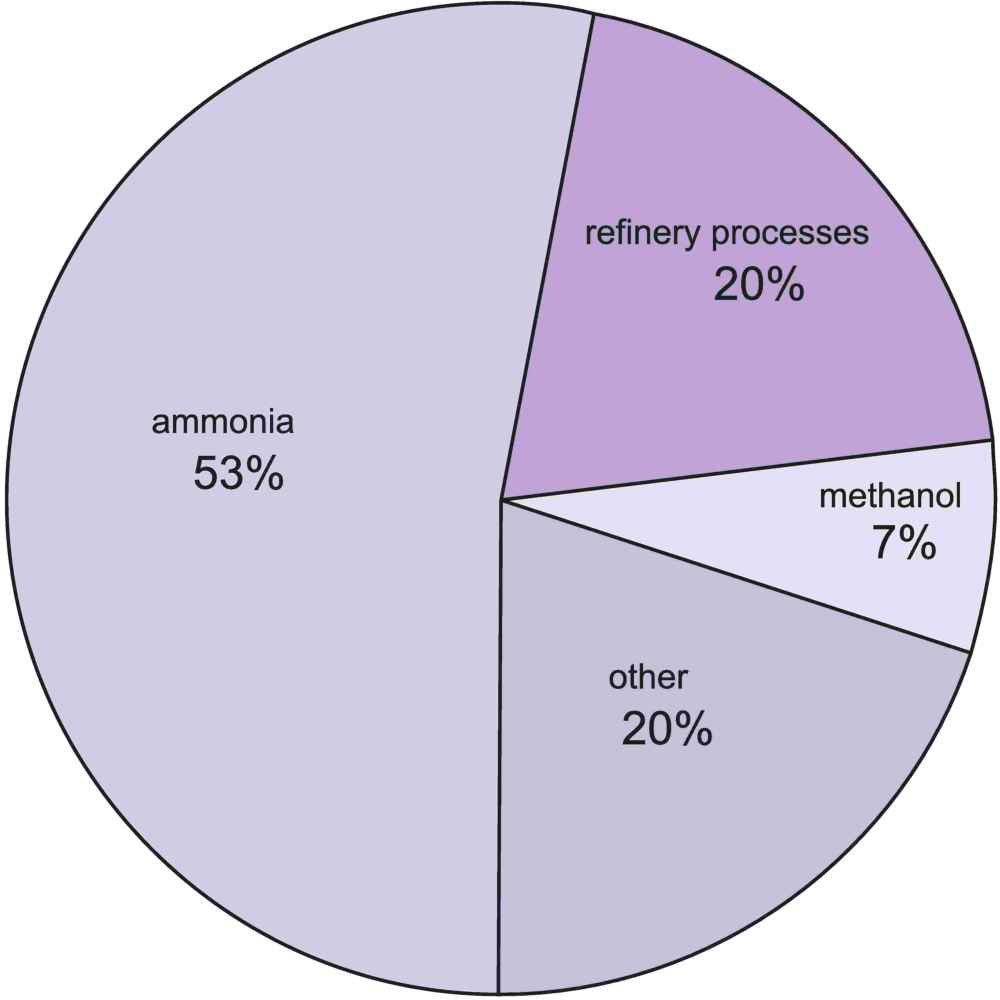“Australia& #39;s hydrogen export potential may be & #39;vastly overstated’”
If I wanted to kickstart a hydrogen economy I’d focus on the demand side - hydrocarbon upgrading, methanol, ammonia, steel. I would not bet on the existence of fuel cell vehicles https://www.smh.com.au/national/australia-s-hydrogen-export-potential-may-be-vastly-overstated-20191121-p53cu1.html">https://www.smh.com.au/national/...
If I wanted to kickstart a hydrogen economy I’d focus on the demand side - hydrocarbon upgrading, methanol, ammonia, steel. I would not bet on the existence of fuel cell vehicles https://www.smh.com.au/national/australia-s-hydrogen-export-potential-may-be-vastly-overstated-20191121-p53cu1.html">https://www.smh.com.au/national/...
The definition of clean/green hydrogen *should* include fossil hydrogen, if it is produced by a zero emissions process.
Hydrogen from methane cracking is clean, and would give the fossil fuel industry the motivation to put their very considerable resources behind clean hydrogen.
Hydrogen from methane cracking is clean, and would give the fossil fuel industry the motivation to put their very considerable resources behind clean hydrogen.
Minister Taylor *should* support a change in strategy to green hydrogen. And the way to achieve this is to bring the fossil fuel industry into the clean hydrogen tent by recognizing green hydrogen from fossil sources.
But world demand for metallurgical coal is about 700Mt, mostly (~70%) steel. If hydrogen displaced coke in these processes that would amount to about 230 Mt hydrogen demand.
So there’s a total of ~300 Mt demand in a small basket of retrofittable chemical & metals production
So there’s a total of ~300 Mt demand in a small basket of retrofittable chemical & metals production
As I wrote here https://thebreakthrough.org/issues/energy/ammonia-is-everest-base-camp-for-clean-energy">https://thebreakthrough.org/issues/en... a small basket of retrofittable processes is a highly attractive target for decarbonization. Focused technology development decarbonizes one process, with enough demand to establish a small but scaleable supply chain.
Then you scale.
Then you scale.
300 Mt of hydrogen a year represents a power flow of about 1300 gigawatts. Let that sink in for a minute. For scale consider Australia’s peak electrical generation capacity is about 50 GW.
This makes it inevitable that a successful clean hydrogen displacement must rely not just on energy (clean electrons for electrolysis) but on matter (actual hydrogen atoms from existing material eg. natural gas).
So if the goal is decarbonization, we must
• recognize zero emission fossil H₂ as clean
• urgently develop methane cracking technology alongside electrolysis
• engage the natgas industry in its development
• leverage existing gas production and distribution to achieve scale
• recognize zero emission fossil H₂ as clean
• urgently develop methane cracking technology alongside electrolysis
• engage the natgas industry in its development
• leverage existing gas production and distribution to achieve scale
That means the most critical components a National Hydrogen Strategy must include are technology development for:
• steel production with hydrogen instead of coke, and
• methane cracking
“Cracking” those two gets half or more of the potential hydrogen market.
• steel production with hydrogen instead of coke, and
• methane cracking
“Cracking” those two gets half or more of the potential hydrogen market.
Renewable hydrogen for hydrogen vehicles, perhaps the most visible part of this hydrogen story, is addressing a market which may never exist, with limited production capacity, and excludes the industry with the expertise and assets required for scale

 Read on Twitter
Read on Twitter




